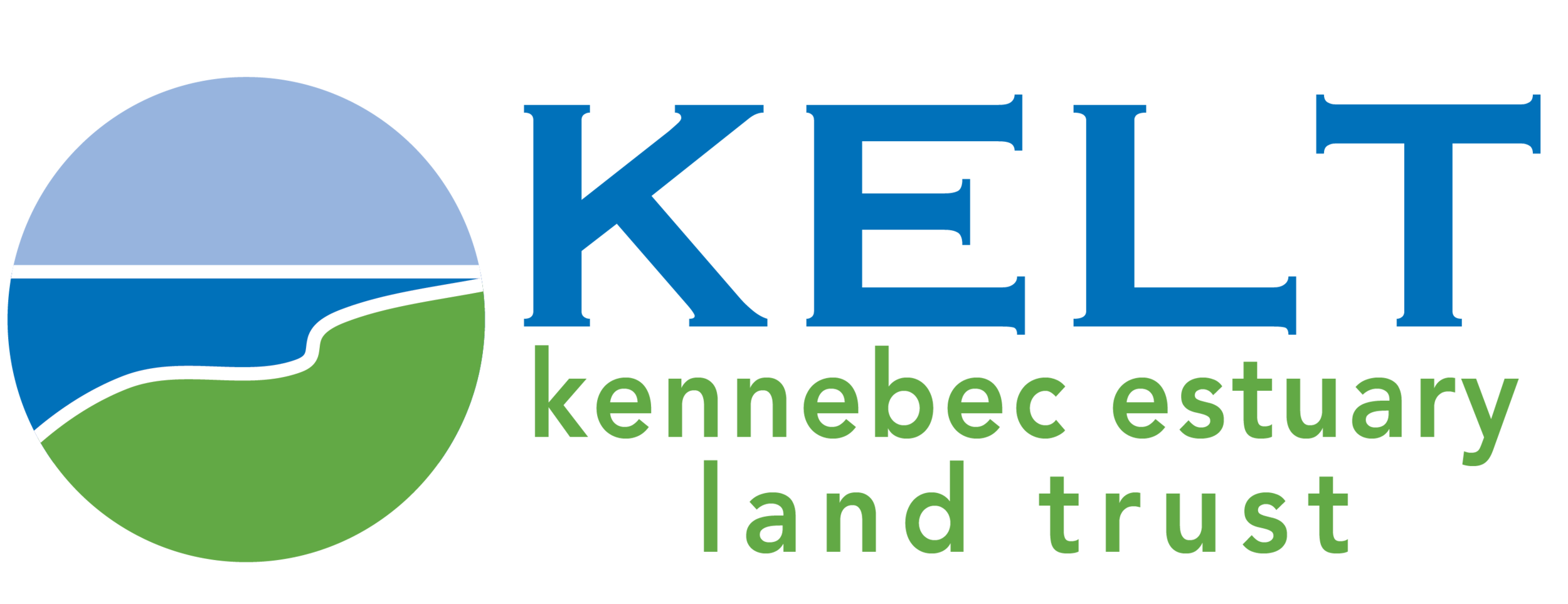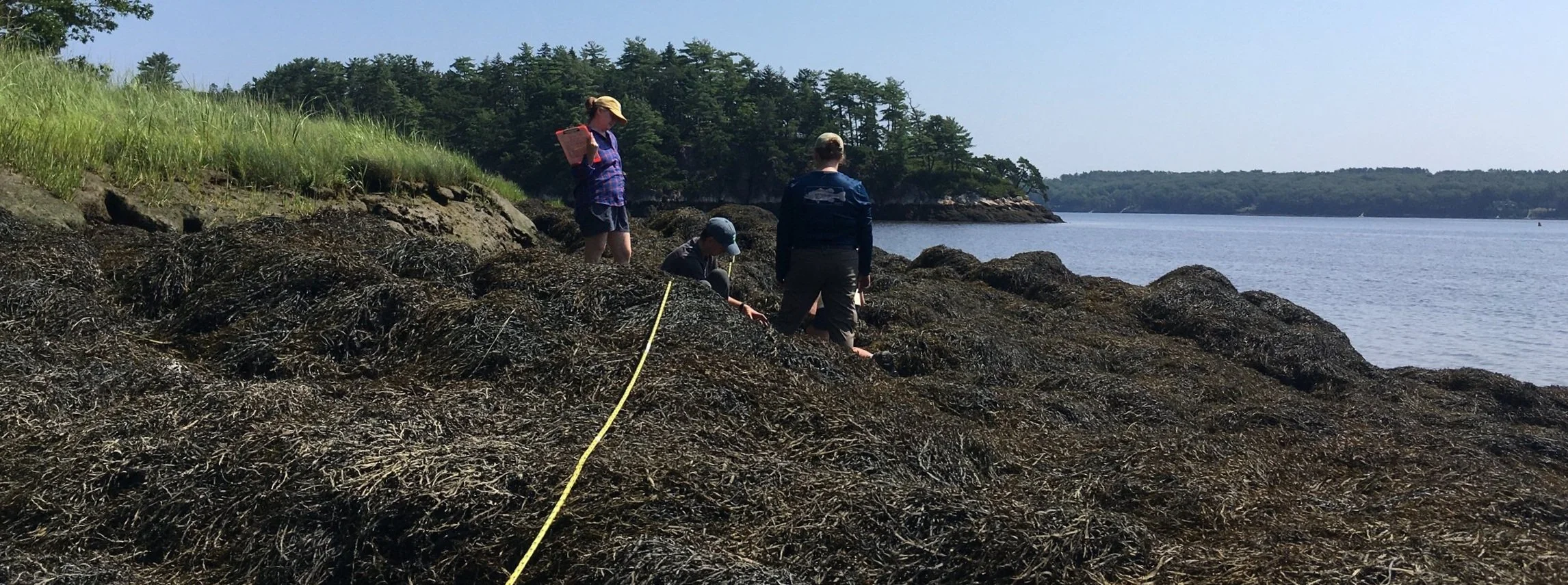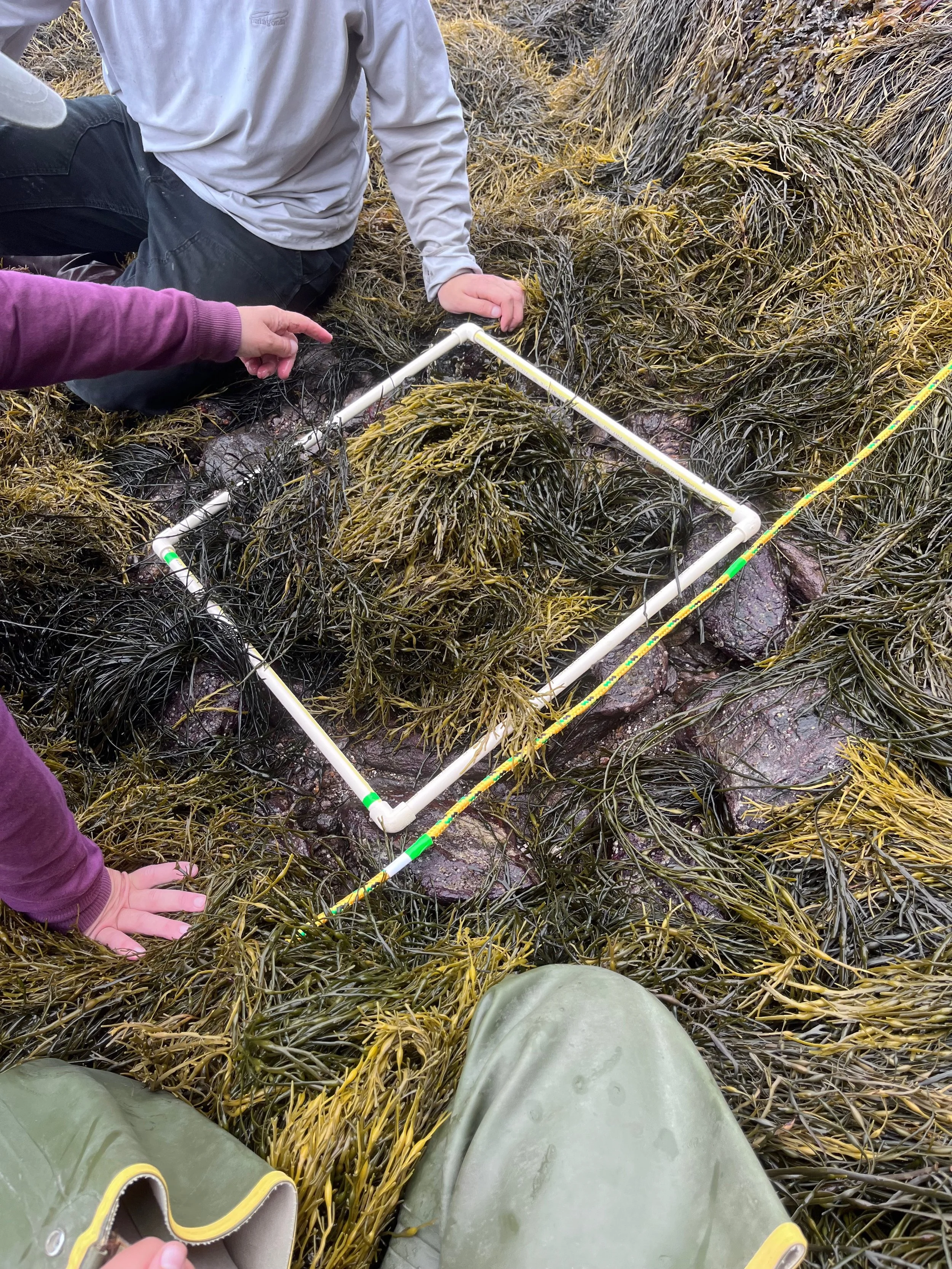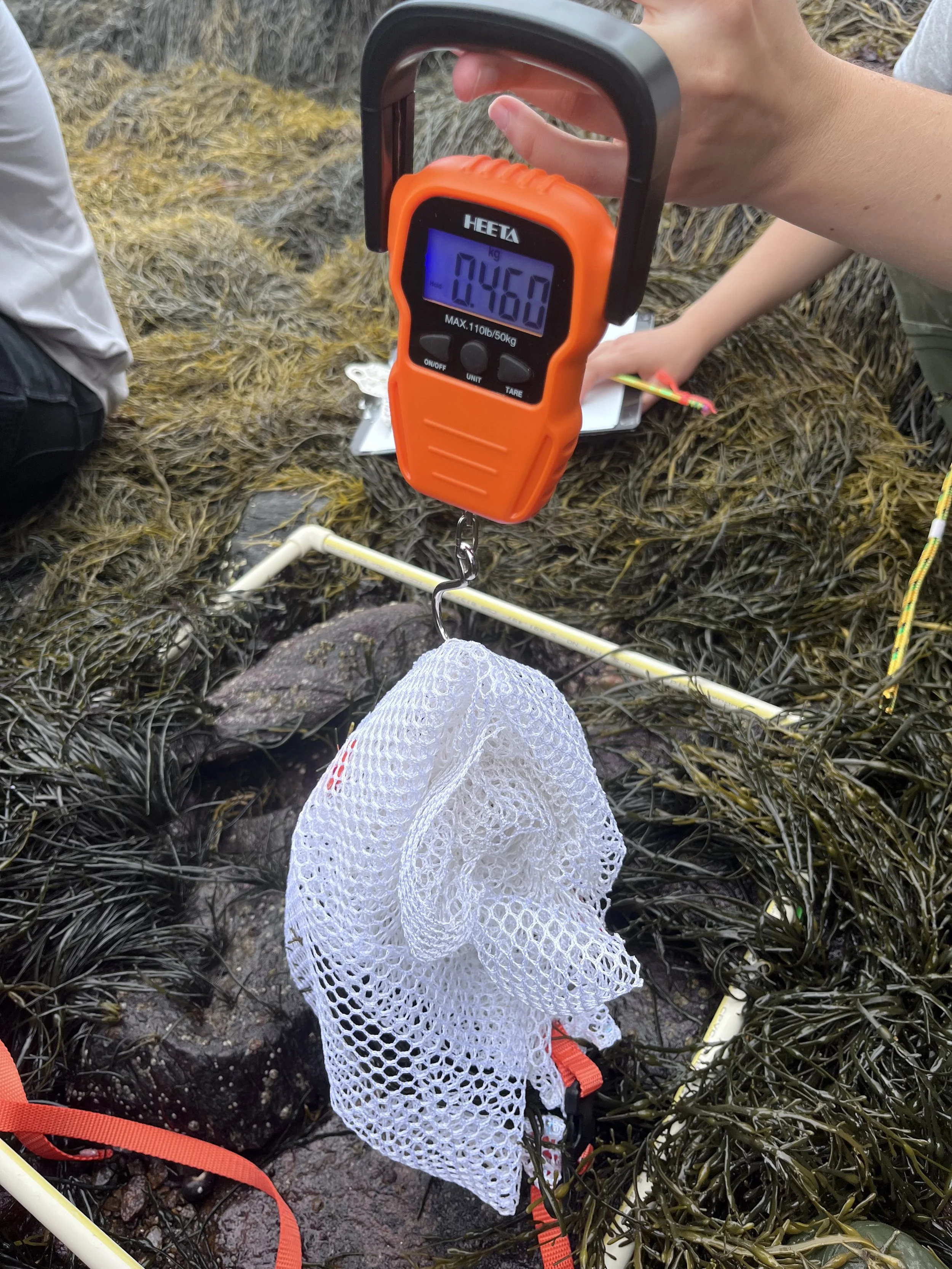In the Field with Leila: Who Knew? Hidden Carbon Collector
By Leila Bannon Summer Land Steward
Walking the spruce lined trail at Green Point Preserve in West Bath was a perfect start to a foggy morning in late July as Ruth, Dillon, Helen and I headed out for rockweed monitoring.
The trail led to a quintessential view of the Maine coast: pine trees lined the rocky coast with boats in the distance slowly being hidden by the fog rolling in. The tide was low, exposing the rockweed that consumed the beach below where we would begin our work.
Project Director, Ruth Indrick, explained to us that the rockweed monitoring is a part of an ongoing statewide project called Project ASCO (Assessing Seaweed via Community Observations), led by the Schoodic Institute at Acadia National Park. The goal of the project is to understand just how much rockweed is on the Maine coast. Rockweed is a dominant beneficial species along the coast and plays a major role in the intertidal zone, which is why Project ASCO wants to quantify the specific biomass of rockweed that inhibits our coast.
This project is important for multiple reasons. Without an understanding of the current biomass of rockweed, it will be hard to understand the limits of sustainable harvesting. As coastlines change, rockweed populations will also likely change. Another important quality of rockweed is that it photosynthesizes. This means that rockweed sequesters carbon from the atmosphere and the ocean and stores it. Tracking the population of rockweed will teach us how to sustainably harvest rockweed, and also serve as a way to track climate change and understand the amount of carbon sequestration that is occurring along the Maine coast. Growing up along the coast, I spent many summers peering under piles of rockweed, looking for crabs and snails, but I never understood the power that rockweed could hold!
We made our way down the rocks to set up our gear for the monitoring. Ruth brought a bucket, complete with the supplies needed for each step. We started by measuring out the transect of where we would be examining rockweed, which was halfway between the highest and lowest points of rockweed. We then placed quadrats every 15 feet along that midline.
After we placed the first quadrat, we made observations looking within the square: a baby Asian shore crab, barnacles dotting the rocks, snails, and native periwinkles. Ruth began to pull the rockweed back, trying to organize it into clusters, rather than the undisturbed tangles that we found it in. As Ruth delicately moved the long tendrils of seaweed, she pointed out the general anatomy, focusing on the holdfasts, where the rockweed attaches to the rock.
Setting up a quadrat.
Each holdfast is one count of rockweed — part of our responsibility was to count each holdfast. Before rockweed monitoring, I did not know the term holdfast, or much else about rockweed anatomy! I kept feeling so astonished that I could know so little about a species I had spent so much time around. I couldn’t help but want to keep learning more.
Weighing rockweed.
The next task was to determine the weight of the rockweed within the quadrat. We carefully gathered the rockweed into bunches, which we wrapped into a swaddle, securing the seaweed. Finally, we hooked a hanging scale to the mesh to calculate the weight.
The final measurement was my favorite: how tall was the tallest frond? We searched through the damp rockweed, trying to find a frond taller than the previous one. On our final quadrat, the tide began to creep up, touching the toes of our waders. We packed our things and left the shoreline, there was no more monitoring to be done.
Identifying a holdfast.
This project piqued my interest because rockweed is naturally occurring, and so abundant on the Maine coast – this means it has the potential to play a major role in our response to climate change. As coastlines change the rockweed populations will also change. Finding a way to quantify rockweed will create a baseline population count, which can be monitored for changes. If the biomass of rockweed is increasing, the amount of carbon being taken from the atmosphere and ocean will also increase. Rockweed monitoring with Ruth will forever change my view of seaweed from a place to discover tidepooling treasures to a vital player in Maine’s strategy to preserve our coastline.





